MAP Website en Español haga clic aqui FEATURED STORY REMINDER: ORDER YOUR MAP International Children’s Art Calendars 2022 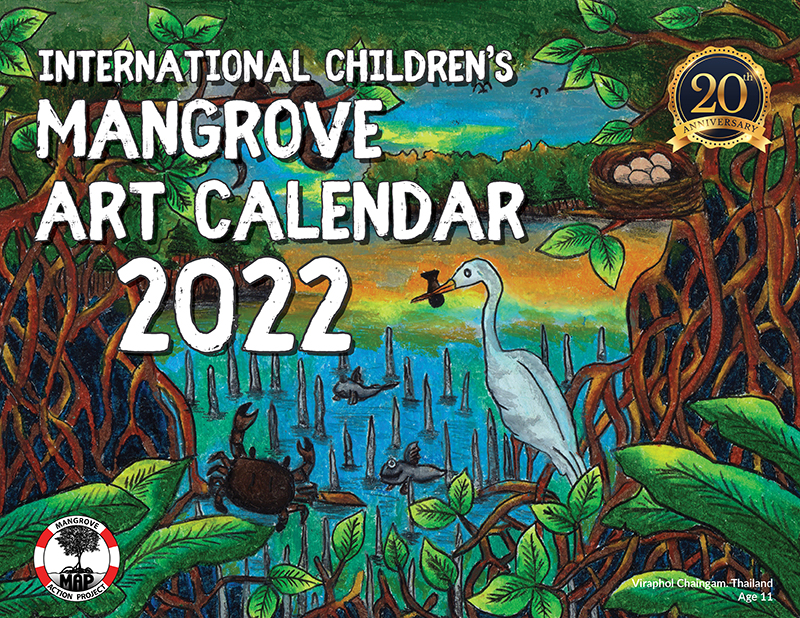 MAP’s International Children’s Art Calendars 2022 are here and ready to order! With beautiful artwork submitted by students from many countries around the world, these calendars both make a great gift, and are a helpful reminder for what we can do to assist in saving our world’s mangroves. All proceeds will go towards furthering MAP’s mission of conserving, restoring, and protecting the world’s invaluable mangrove forests. We wish to thank every child, their teachers and associate non-governmental organizations that participated and collaborated in MAP’s 20th anniversary International Children’s Mangrove Art Contest during 2021. For two decades, MAP’s art contest has been inspiring and creating awareness as well as giving the youths the opportunity to voice and express their point of view on mangrove forests and the problems mangroves face today. We are thrilled to see interest for mangroves continuing to grow among youths, inspiring creative art and learning through participation. Through the art contest, young artists discover the incredible beauty, importance, and biodiversity of mangrove forests, depicting through their art what they have experienced via mangrove field trips, or in the classroom, and home studies. ORDER HERE GLOBAL ‘Rich nations must pay for African conservation’
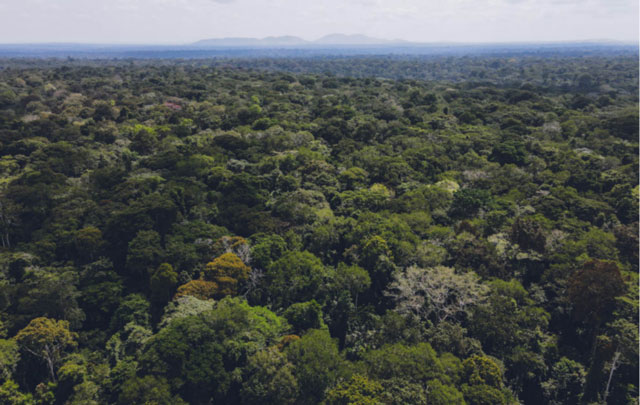
GLOBAL – African leaders, business executives, and climate change activists have stressed the need for financial resources to be mobilized to ensure that the African continent restores and protects its critical ecosystems which are critical in sucking in and storing carbon. These include; Africa’s savannahs, mangroves and swamps, coral reefs and marine reserves. The sentiments came out on Nov.03 during a high level event on the sidelines of the ongoing global climate conference in Glasgow, Scotland. This was two days after leaders from over 100 countries pledged “to end deforestation by 2030.” The side event was organised by the Giants Club, an initiative of the international conservation organisation, Space for Giants, which operates in 10 African countries including; Botswana, Gabon, Kenya, Rwanda and Uganda and is dedicated to ensuring a healthy planet on which both large wild animals like elephants and people exist. President Uhuru Kenyatta of Kenya headlined the event alongside Max Graham, the founder and CEO of Space for Giants who chaired and moderated the event, Lord Evgeny Lebedev, who co-hosted the event with President Kenyatta, Peter Bacchus, a veteran investment banker who is the chairman of Bacchus Capital, and Akinwumi Adesina, the president of the African Development Bank. READ MORE AFRICA Gabon plumbs carbon mystery of its mighty mangrove trees
/cloudfront-us-east-2.images.arcpublishing.com/reuters/5PAI6MQWXRMLNAJR63L3F3XXUE.jpg)
GABON – The towering trees in Gabon’s impenetrable mangrove swamps have helped to make the Central African country one of the world’s few net absorbers of carbon as the plants sequester the greenhouse gas four times faster than forests on land. While the world struggles to curb climate change and U.N. talks on the issue begin at the end of the month, countries such as Gabon are trying to work out exactly how much carbon is locked in their mangroves. “We do not really have a lot of information on the mangrove forests compared to the terra firma forests,” said Vincent Medjibe, who collects carbon data for Gabon’s National Parks Agency. “We’re working on it.” Across the estuary from the mangrove-rich Pongara National Park, the growing capital Libreville exemplifies the threat mangroves face. In one outer neighbourhood, dry tussocks and muddy holes are what remain of a former swamp that has been illegally cleared for construction. As well as storing carbon, the swamps are rich in wildlife and serve as natural flood defenses. READ MORE AMERICAS Restoring Mexico’s mangroves can shield shores, store carbon

MEXICO – When a rotten egg smell rises from the mangrove swamps of southeast Mexico, something is going well. It means that this key coastal habitat for blunting hurricane impacts has recovered and is capturing carbon dioxide — the main ingredient of global warming. While world leaders seek ways to stop the climate crisis at a United Nations conference in Scotland this month, one front in the battle to save the planet’s mangroves is thousands of miles (kilometers) away on Mexico’s Yucatan Peninsula. Decades ago, mangroves lined these shores, but today there are only thin green bands of trees beside the sea, interrupted by urbanized areas and reddish segments killed by too much salt and by dead branches poking from the water. A few dozen fishermen and women villagers have made building on what’s left of the mangroves part of their lives. Their work is supported by academics and donations to environmental groups, and government funds help train villagers to organize their efforts. The first time they came to the swamp for seasonal restoration work was more than a decade ago with Jorge Alfredo Herrera, a researcher at the Center for Research and Advanced Studies of the Mexican Polytechnic Institute in Yucatan. He told them the mangroves needed a network of interlaced canals where fresh and salt water would mingle. READ MORE Blue carbon: the hidden CO2 sink that pioneers say could save the planet

COLUMBIA – Off the Caribbean coast of Colombia, rare manatee calves have been spotted in the canals and rivers of Cispatá Bay’s mangrove forests. The once-critically endangered American crocodile is now seen more frequently. Birds and lizards nest in the branches, fish and shrimps use the roots as nurseries. These 11,000 protected hectares (27,000 acres) of mangroves are a biodiversity hotspot. But the Cispatá conservation project, a collaboration between Colombia’s Marine and Coastal Research Institute (Invemar), Conservation International (CI) and Apple, is not just of interest to birdwatchers and ecologists. It has attracted the attention of marine scientists, researchers and corporations, as it is among the first to measure and sell a new type of credit to fund conservation: “blue carbon”. Mangroves, like other coastal wetlands, are powerful carbon sinks. That is, they suck up carbon dioxide from the air to store in their roots and branches, as well as the sediment that collects around them. They do this so well that they can store up to 10 times more carbon than forests. READ MORE ‘We can’t live like this’: climate shocks rain down on Honduras’s poorest

HONDURAS – It was around dusk on the third consecutive day of heavy rain when the River Aguán burst its banks and muddy waters surged through the rural community of Chapagua in north-east Honduras, sweeping away crops, motorbikes and livestock. Most inhabitants fled to higher ground after the category 4 Hurricane Eta made landfall in early November 2020, but fisherman Rosendo García stayed behind, hoping to safeguard the family’s home and animals. After a ravine on the opposite side of the village also flooded, there was no way out. Inside his single-storey brick house, the water quickly rose from knee-deep to chest high. “It was so fast, like milk when it boils,” said García, 55. He escaped once the water subsided a few days later with just one pig, a few chickens and a dog. But shortly after, a landslide carried the entire house into the river, taking everything the family owned, including fishing nets, furniture and most of the animals. More than 40 sacks of freshly harvested corn were ruined, the once-fertile land buried under sand. Garcia’s entire extended family was left destitute. READ MORE How Belize is Transforming the Caribbean
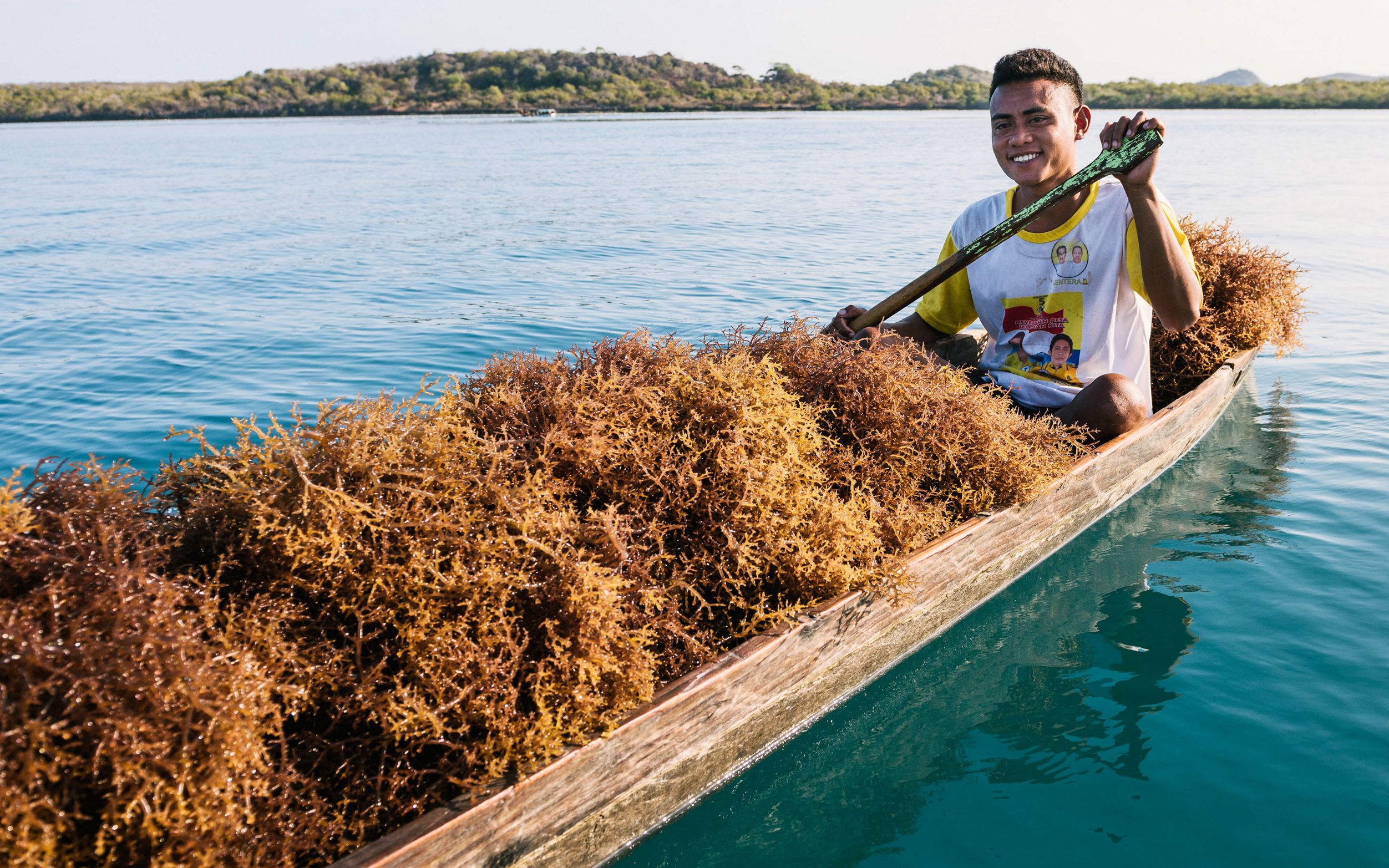
BELIZE – By many accounts, Belize is a conservation success story, and a role model when it comes to climate and biodiversity action. While the country is only about the size of the U.S. state of New Jersey, it is dense with flora and fauna unique to this part of the Caribbean and Central America, and much of that treasure lies along its cerulean coast. But the nation’s natural assets are more than just a point of pride: they represent a large and vital part of its economy. The Belize Barrier Reef System features three of four coral atolls in the Atlantic, lush mangrove forests, numerous offshore islands, and one of the most extensive seagrass areas in the Caribbean. It hosts 77 species listed as threatened by the IUCN, including a sizeable population of West Indian Manatees. Now, Belize has reaffirmed its environmental leadership by becoming the first country in the Americas to finalize a debt conversion for ocean conservation—and one that represents an impact investment for marine protection that’s unprecedented in scale. This commitment will enable Belize to restructure approximately US$550 million of external commercial debt—an amount that represents 30 percent of the country’s GDP—and reduce the national debt by 12 percent. READ MORE ASIA Anawilundawa Wetland Regeneration Project: WNPS achieves key milestones with Hemas PLC’s support

SRI LANKA – Sri Lanka’s current mangrove cover, estimated to be 15,000 to 19,000 hectares, is a mere 0.3% of the total landmass and is critically low; putting the island at risk from the impact of climate change and natural disasters such as storm surges and tsunamis. Mangroves are an integral part of our forests and constitute about 2% of Sri Lanka’s total forest cover – they are very much a part of the fast dwindling 17% of our primary forests.WNPS’s Accelerated Natural Regeneration of Mangroves (ANRM) project was launched with the goal of regenerating the damaged mangrove habitats in Anawilundawa Wetlands and building sustainable livelihoods in surrounding communities. The project aims to restore approx. 45 hectares (110 acres) of the mangrove ecosystem at Anawilundawa, which have been destroyed due to shrimp farming. This important conservation project is to be conducted by Sri Lanka’s Department of Wildlife Conservation (DWC), Department of Forests (FD), Wayamba University (Science Partner), facilitated by the Wildlife and Nature Protection Society (WNPS). READ MORE GOB is to cancel 6 more coal power plants
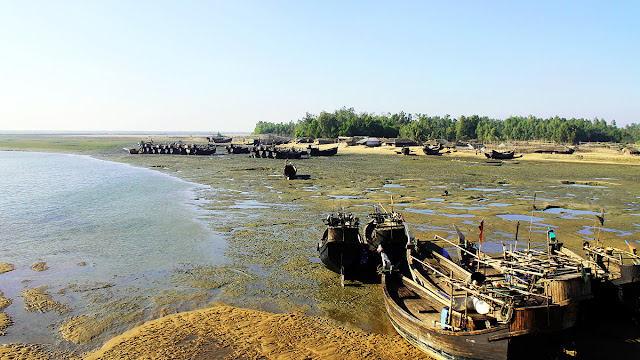
BANGLADESH – The Government of Bangladesh (GOB) is to declare the cancellation of 6 more coal-fired power plants which were planned to be developed on the Maheshkhali Islands. The total capacity of these planned power plants is 7920 MW. The enlisted power plants to be cancelled are:
Maheshkhali 1320 MW (BPDB-CHDHK) Coal Power Plant (Phase-I)
Maheshkhali 1320 MW (BPDB-CHDHK) Coal Power Plant (Phase-II)
Maheshkhali 1320 MW (BPDB-TNB) Coal Power Plant
Maheshkhali 1320 MW (BPDB-KEPCO) Coal Power Plant
Maheshkhali 1320 MW (BPDB-SEPCO) Coal Power Plant; and
Maheshkhali 1320 MW (BR PowerGen) Coal Power Plant
Earlier in June 2021, the Government cancelled 10 approved coal power plants in different zones of Bangladesh. Among those, two power plants with a capacity of 2640 MW were based on the Maheshkhali Islands. The GOB had a plan to develop 10 coal power plants with a capacity of 12960 MW on the island. Among those, Matarbari 1200 MW Phase-I financed the Japan International Cooperation Agency (JICA) and sponsored by the Coal Power Generation Company Bangladesh Limited (CPGCBL) is under construction now and a feasibility study of Matarbari 1200 MW Phase-II is going on. Two power plants – Maheshkhali Coal Power Plant (Phase-I) and Maheshkhali Phase-II were cancelled in June 2021. READ MORE Women Plant Mangroves To Bolster India’s Cyclone Defences
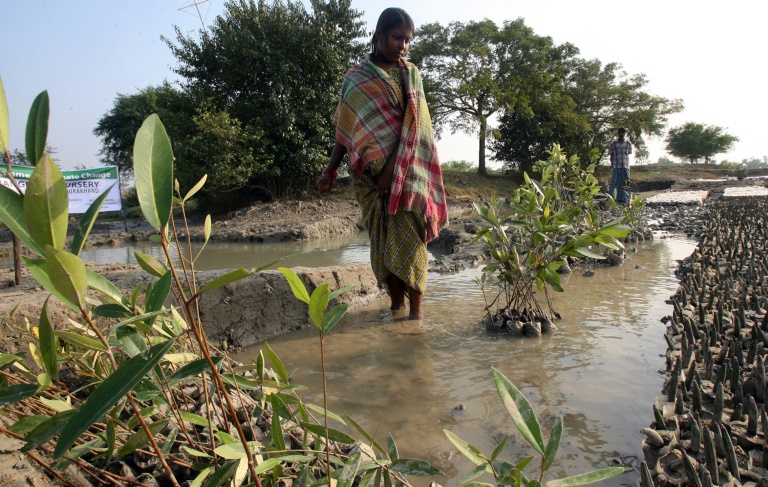
INDIA – With India facing ever more powerful cyclones, women in the world’s largest mangrove forest are planting thousands of saplings to help protect their coastal communities from climate change. The Sundarbans straddle the coastline into neighbouring Bangladesh and are home to some of the world’s rarest creatures, including the Bengal tiger and the Irrawaddy dolphin. The forest has been designated a World Heritage site but has in the past suffered from illegal logging and is regularly battered by intense monsoon storms. Walking ankle-deep along a muddy shore, and balancing young plants on their heads, a group of local women last week began the long process of reforesting a bare stretch of coastline. “This is an area prone to storms and cyclones,” said Shivani Adhikari, one of the women involved in the initiative. “So to protect the embankments, all of us women are planting.” READ MORE Like this newsletter?
Pease consider donating to MAP to keep it going.
Giving could never be easier  | ACTION ALERTS BHP: Stop the Greenwash
There is no such thing as ‘green mining’. SIGN OUR PETITION Strengthen 60 Women Farmers in El Salvador
DONATE HERE Stop the East African Pipeline that threatens the planet #STOPEACOP – CLICK HERE Stop construction work on a private port In Defense of the Quilombo Boca Do Rio TAKE ACTION! Tell Sumitomo to stop building polluting coal power in Bangladesh! TAKE ACTION!
Like this newsletter? Pease consider donating to MAP to keep it going. Giving could never be easier 
MAP Website en Español
haga clic aqui
PRINTING EARLY NOV
ORDER YOUR 2022 MAP CHILDREN’S ART CALENDER HERE
TO RECEIVE BEFORE JAN 1
 13 Year old Linda Li “Mangrove Adventure” from Kid Dream Art School

WATCH NOW 
Restoring The Natural Mangrove Forest
Watch movie

Community Based Ecological Mangrove Restoration in Rufiji Delta VIEW VIDEO
Video: Mangroves for the Future
View Here WANT TO GET INVOLVED?
Follow and Join MAP!    
Like this newsletter? Pease consider donating to MAP to keep it going. Giving could never be easier 

Interested in connecting or working with MAP? Check out our opportunities here 
MANGROVE ISSUES Want to learn more about mangroves?
Our short presentation will give you a better understanding of the issues we are working to solve. WATCH PRESENTATION What is CBEMR? Download MAP’s 2 page CBEMR Information Sheet containing links to all MAP’s CBEMR resources – CLICK HERE View MAP’s uploaded Videos at
MAP Video Gallery Question Your Shrimp Consumer/Markets Campaign!
WATCH VIDEO Mangroves: Guidebook to Malaysia – Click Here SHARE MAP’S VISION
CLICK HERE to watch short introductory video. Together we can work “at the roots of the sea”. Our short documentary, Reducing the Risk of Disaster through Nature-Based Solutions : Mangroves 
Marvellous Mangroves Curriculum The Marvellous Mangroves Curriculum begins with a simple philosophy – getting future generations to not only learn about, but understand the importance of mangrove forests. VISIT 
The award-winning Marvellous Mangroves (MM) curriculum educates children on the importance of mangroves and their ecological functions, teaching them about modern challenges and mechanisms for sustainability. VIEW VIDEO Marvellous Mangroves Curriculum in Bangladesh – WATCH VIDEO
MARVELLOUS MANGROVES IN BRAZIL
En Portuges 
Marvellous Mangroves – A Curriculum-Based Teachers Guide.
Like this newsletter? Pease consider donating to MAP to keep it going. Giving could never be easier 
“Question Your Shrimp” Campaign Question Your Shrimp – is it really sustainable? Sign the Petition
Note to Our Readers: We strive to keep active links in our newsletter. However, due to circumstances beyond our control, occasionally links to stories may become broken. If you find a link to a story is not functioning, please cut and paste the headline into your browser search bar. In most cases you should be able to locate the original story.
Not yet a MAP News subscriber?
Click here to subscribe. 
|



/cloudfront-us-east-2.images.arcpublishing.com/reuters/5PAI6MQWXRMLNAJR63L3F3XXUE.jpg)




















